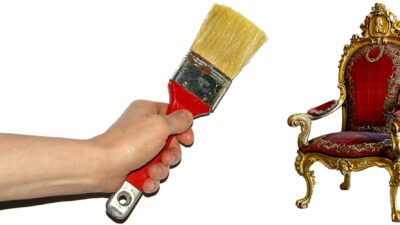Thinking about starting a furniture restoration project? Regardless of whether the restorer is professional or amateur, they have one thing in common. They want to take a piece of old furniture and bring life back to it. They want to restore it to its former glory and, where some of us would see a bed frame or chair with broken legs, they see a new project.
The object is to give the old dresser or the armchair a facelift, to make it a useful item again, as close to its original condition as possible. Here are some great tips to consider before you begin your next DIY furniture restoration project that will save you time, money and frustration.
Time Estimate
The first thing to realize is how many hours a restoration can take. You may have intricate carvings to get stripped and refinished, or rust to remove. These things take a lot of patience and time, and, if your project is likely to take more time than you are willing to spend, then find another, simpler piece of furniture to restore.

Research Your Piece Before You Start
Before you start work, you should research the piece just in case you have come across something of great value. If you have, as an amateur, you could do more harm than good and you should have it restored by the professionals. Take photos of any markings or tags if you are unsure. Then get a professional evaluation.
It can be likened to having some work done on your home. If you need electrical work, you call an electrician with the correct qualifications; if you need new doors fitted, you call a carpenter. Leaving beloved pieces in somebody else’s hands might seem daunting but a good professional furniture restorer will be insured against bumps and scrapes. Professionals deal with antiques and special pieces all the time, and they need to ensure they are covered in the event of something going wrong with carpenter insurance. Yes, it actually exists.
Estimate Your Restoration Budget
Set a budget for the amount you can afford to spend on your furniture restoration project. Some restoration can prove to be quite expensive if you need to buy materials to cover seats, for example. Ask yourself if the restoration will cost less than buying a new piece. Some items will need a few simple fixes but others will need a lot of time and effort, which is probably why the last owner discarded them.
Have The Proper Safety Gear
As with any job you are doing yourself, you need to make sure you are safe from harm. Wear long-sleeved clothing to protect your skin from the chemicals found in strippers and varnishes. Have some(Amazon link) safety goggles to protect your eyes from flying splinters and wear a mask in a room that is well ventilated. This way you will not be breathing in any toxic fumes.
Give The Piece A Good Clean
Before you do anything else, give the piece of furniture that you are restoring a good clean. Over time, dirt and grime can become ingrained into the wood and a good clean can reveal a new look to the furniture. It is not unusual to realize that a good clean and polish is the only restoration a wooden piece needs. Each piece of furniture will be unique, so do your homework before using specific types of cleaners on your restoration piece. Sometimes just using dish soap and a rag will be all it takes to clean before your furniture refinishing. Mineral spirits can be used as a solvent to help remove grime and buildup from wax, polish, and oils. Gently buffing with the grain of the wood using toothpaste on clean cotton cloths or 0000 steel wool is another possible option.
Refinish Or Paint?
This is the hardest part of a furniture restoration project for most amateur restorers. If you don’t do it properly, then you will have wasted all your time and effort. A combination of chemical strippers and sandpaper is usually the best way for amateurs to remove layers of paint or oil-based finishes. Keep doing this till you are back to bare wood all over. But in general, you’ll want to avoid using hard grit sandpaper. It will do more harm than good.
Some finishes can be harder to remove than others but trying to rush this process can derail the project altogether. Make the surface as smooth as you can and then either stain or use a coat of paint for the final finish.
Furniture Restoration: It’s Worth The Effort
A lot of hard work will go into your furniture restoration project. But it will be satisfying every time you use your piece of restored furniture, knowing that you restored the piece yourself. Also, remember that by restoring the furniture you are helping reuse and upcycle materials that might otherwise end up in a landfill. So take pride in knowing that your DIY furniture restoration efforts are helping save our environment.
Related Articles:
- How To Turn Glass Into A DIY Mirror Using Silver Nitrate
- Tip On How To Improve Your Movie At Home Viewing Experience
- To The Batpoles! How To Build A Secret Bookcase Door
- Things You Probably Didn’t Know About The Phrase “Couch Potato”













 Gutenberg Sucks! Here’s How To Disable The New WordPress Editor
Gutenberg Sucks! Here’s How To Disable The New WordPress Editor
Leave a Reply
You must be logged in to post a comment.